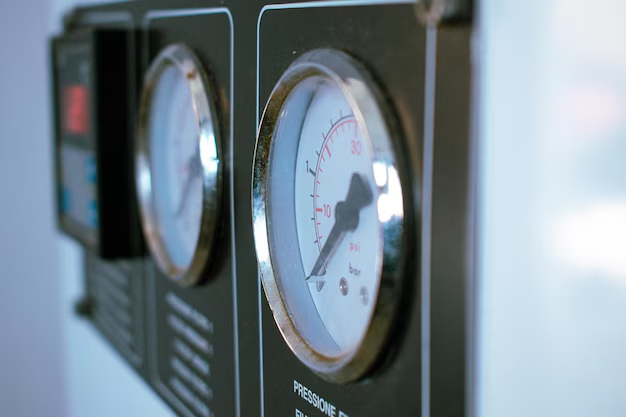The Perfect Refrigerator and Freezer Settings: A Comprehensive Guide for Optimal Food Preservation
Have you ever wondered if your fridge and freezer settings are just right for keeping your groceries fresh? It’s easy to overlook, but the temperature at which you keep your refrigerator and freezer plays a crucial role in preserving food quality and safety. In this guide, we dive deep into the optimal temperature settings, explore practical tips for maintaining these temperatures, and address frequently asked questions about refrigeration.
📊 Optimal Temperature Settings
Refrigerator Settings
The optimal temperature for your refrigerator is between 35°F and 38°F (1.7°C to 3.3°C). This range ensures that your food stays fresh without freezing and helps prevent harmful bacteria growth. Temperatures above 40°F (4.4°C) may encourage the growth of bacteria, leading to food spoilage and increased risk of foodborne illnesses.
Freezer Settings
For freezers, the recommended temperature is 0°F (-18°C) or lower. At these temperatures, bacteria become dormant, preventing spoilage and ensuring the long-term storage of food. Keeping your freezer at 0°F ensures that your frozen goods maintain their texture and nutritional value.
⏱ Importance of Maintaining the Right Temperature
Food Safety
Correct temperature settings are essential for food safety. Both refrigerators and freezers are designed to slow down the activity of bacteria. Even at low levels, bacteria activity can lead to spoilage and foodborne diseases if the temperature is not properly regulated.
Energy Efficiency
Setting your refrigerator and freezer to appropriate temperatures can lead to greater energy efficiency. Appliances not set correctly can overwork, increasing electricity consumption and utility bills. Balanced settings help achieve both environmental and economic sustainability.
🌡️ Factors Influencing Temperature Settings
1. Refrigerator Load
The amount of food in your fridge can affect internal temperatures. A fully stocked fridge retains cold better than an empty one, but overcrowding can prevent proper air circulation, leading to uneven cooling.
2. External Temperature
Ambient room temperature can influence appliance efficiency. During hot spells, refrigerators may need to work harder, making it crucial to monitor and adjust settings accordingly.
3. Frequency of Use
Frequent opening and closing of refrigerator doors can lead to temperature fluctuations. Keep doors closed as much as possible to maintain a stable internal environment.
4. Appliance Design and Age
Older models or poorly maintained units might struggle to hold consistent temperatures. Regular maintenance, such as cleaning coils and checking seals, can improve performance.
🔧 How to Monitor Your Appliance Temperatures
Use a Thermometer
To ensure your appliance maintains the appropriate temperature, consider placing a separate appliance thermometer inside both the fridge and freezer. This practice is especially helpful for older models without digital displays.
Regular Checks
Conduct regular checks, at least once a month, to confirm that your internal temperatures are within the recommended ranges. Adjust settings if necessary.
Alarms and Alerts
Many modern refrigerators come with alarms that alert you to rising temperatures, either due to the door being left open or equipment failure. Make use of these features if available.
🛠️ Simple Troubleshooting Tips
Uneven Cooling
- Solution: Rearrange food items to allow for proper air circulation. Ensure that items are not blocking vents inside the refrigerator.
Frost Build-up in Freezer
- Solution: Check door seals for leaks and avoid placing warm food directly into the freezer to minimize moisture that can lead to frost.
Refrigerator Frequent Cycling
- Solution: Clear the condenser coils of dust and debris, and ensure the appliance has ample ventilation space.
Freshness Tips and Next Steps
- Label & Organize: Use labels with purchase dates and organize items by type and use-by dates to reduce waste.
- Regular Cleaning: Maintain cleanliness inside your refrigerator to minimize odor and bacterial contamination.
- Check Gaskets: Ensure that the rubber gaskets around your refrigerator door are clean and free from cracks to prevent cool air leaks.
🗒️ Summary Table: Quick Temperature Guide
| Component | Optimal Temperature | Key Tips |
|---|---|---|
| Refrigerator | 35°F - 38°F (1.7°C - 3.3°C) | Monitor with a thermometer, avoid overstocking 🚪 |
| Freezer | 0°F (-18°C) | Defrost if manual, regularly check seals❄️ |
Setting and maintaining the right temperatures in your refrigerator and freezer is not just about protecting your groceries, but it's also about ensuring they taste as fresh as possible. With these simple guidelines, you can keep your kitchen running smoothly and efficiently, all while saving on energy costs and reducing food waste.
By understanding and utilizing these temperature settings and maintenance tips, you can elevate your appliance's performance and extend the life of your food. Keep refreshingly cool and consistently frozen with confidence, knowing that both safety and efficiency are right on track.
Remember, consistency is key. By regularly monitoring and adjusting your appliance settings, you'll ensure a harmonious and healthy food storage environment, leading to fewer worries and more enjoyable mealtimes.
